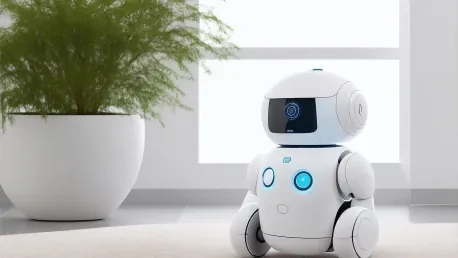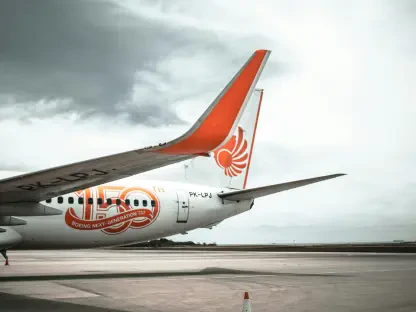The COVID-19 pandemic has upended many industries, but few as dramatically as the hospitality sector. A pronounced staffing crisis looms large, as establishments struggle to rebound in its aftermath. The need for innovative solutions to navigate these challenging waters is paramount. It is against this backdrop that robots are emerging as critical allies, offering the promise of alleviating staffing shortages and reshaping the landscape of hospitality services.
The Extent of the Staffing Crisis
Post-COVID Hospitality Staffing Gaps
The hospitality industry across the EU has been hit particularly hard by staffing shortages in the wake of the pandemic. According to data from Hotrec, there is a staffing gap of 10% to 20% when comparing current levels to those of 2019. Countries like France with 200,000 unfilled positions, Italy with 250,000, Austria with 33,000, and the UK with about 174,000 job vacancies highlight the widespread challenge. This shortfall translates into significant financial losses, with an estimated €21 billion ($23 billion) in lost revenue. The inability to staff adequately has far-reaching implications, putting immense strain on businesses already struggling to recover.These deficits are creating immense pressure on the hospitality industry, threatening efforts to bounce back post-pandemic. The inability to fill positions means businesses are struggling to maintain service levels, leading to operational inefficiencies and a potential decline in customer satisfaction. This results in a vicious cycle where the inability to provide high-quality service hampers recovery efforts, which in turn exacerbates staffing shortages. The industry is thus caught in a feedback loop of declining service quality and increasing staff vacancies, making innovative solutions all the more crucial.
Introduction of Robotic Solutions
United Robotics Group’s Approach
Anis Ben Mahmoud, the hospitality and retail business development director at United Robotics Group (URG), advocates for the integration of robots as a strategy to mitigate staffing challenges. URG’s robots, like Plato, introduced in 2022, are designed to take over repetitive low-value tasks that otherwise consume human resources. This allows human staff to focus on more dynamic and valuable interactions with guests. Plato and similar robots are engineered to seamlessly fit into the hospitality environment, taking care of mundane chores such as dish transportation and cleaning, thereby lightening the workload on human employees and allowing them to concentrate on more customer-facing roles.Integrating robots in hospitality settings offers numerous advantages. Primarily, they increase staff satisfaction by relieving them of monotonous tasks that can cause fatigue and injuries. This improvement in working conditions not only helps in retaining existing employees but also makes the industry more attractive to potential workers. Increased employee retention leads to better morale and subsequently, higher quality service, benefiting the business in a holistic manner. Robots therefore are not merely stop-gap measures but serve as long-term enhancements to the work environment, leading to sustainable operational efficiencies and improved guest experiences.
Case Study: Plato’s Application in Hospitality
Operational Efficiency at Le Méridien Étoile
At Le Méridien Étoile, a prominent 1,000-room hotel, Plato plays a pivotal role during the demanding breakfast hours. Staffing during early morning shifts can be particularly challenging, but Plato addresses this by automating the transportation of dirty dishes to the dishwashing area. This allows human staff to focus on guest interaction and table cleaning. The introduction of such robotic assistance not only alleviates the burden on human staff but also ensures that the hotel maintains high standards of cleanliness and service. The presence of robots like Plato during peak hours has translated into a more efficient workflow, allowing the hotel to accommodate more guests without compromising on the quality of service.On an average day, each Plato robot covers about a kilometer and handles around 306 kilograms of dirty dishes, aggregating to more than 900 kilograms collectively during breakfast hours. This ensures tables are promptly available for guests, significantly enhancing the dining experience. The efficient distribution of tasks not only optimizes operations but also frees up human staff to engage more meaningfully with guests. By taking over tedious tasks, robots like Plato enable hotels to better utilize their human resources, moving them to roles that genuinely enhance guest satisfaction and service quality. The case of Le Méridien Étoile serves as a compelling example of how robotic integration can lead to tangible improvements in operational efficiency and customer experience.
Technological Adoption and Employee Sentiment
Positive Sentiment Towards Robotics
A survey by GlobalData’s Q4 2023 Tech Sentiment Polls reveals that 72% of respondents believe robotics will fulfill its promises, indicating a higher level of positivity towards robotics than towards technologies like AI, cybersecurity, or cloud computing. Such optimism reflects a growing recognition of the benefits robots can bring across various sectors. It suggests that the potential of robotic technology is being acknowledged more widely, paving the way for increased adoption and integration across various industries. This increasing acceptance signifies a broader cultural shift towards embracing technological advancements as vital components of modern business operations.While some initial resistance from staff is common, these sentiments usually change once the advantages become apparent. Employees often transition from skepticism to advocacy, recognizing that robots like Plato augment rather than threaten their roles. This shift is crucial for the successful integration of robotic technologies in the workplace. As workers begin to experience firsthand the ways in which robots can reduce their workload and enhance their own job satisfaction, they are likely to become champions of these technological innovations. This growing acceptance among staff is vital for the smooth implementation and long-term success of robotic solutions in the hospitality sector.
Expanded Use of Robots Beyond Hospitality
Applications in Transport and Healthcare
Besides hospitality, Plato finds applications in diverse sectors, including transport and healthcare. In airport lounges, such as those at Lyon and Nice, Plato assists staff by automating tasks like meal delivery and waste disposal, enhancing the passenger experience. By taking over these repetitive tasks, Plato allows airport staff to focus more on passenger assistance and customer service, thereby improving the overall experience for travelers. The versatility of robots like Plato means that they can be adapted for various logistical tasks in different settings, making them valuable assets across multiple industries.In healthcare settings, these robots relieve medical staff from routine logistical tasks, allowing them to focus on direct patient care. The automation of tasks such as transporting medical supplies, delivering meals, and handling waste disposal means that healthcare professionals can dedicate more time and energy to patient care. This not only enhances operational efficiency but also improves the quality of care provided to patients. The positive impact of robots like Plato in healthcare settings demonstrates their potential to revolutionize not just hospitality but a broad spectrum of industries facing similar staffing and operational challenges.
Retail and Marketing Innovations
In the retail sector, Plato has been utilized for promoting products and aiding staff with logistics. For instance, in Red Bull stores in Germany, Plato not only enhances product visibility but also helps transport heavy items from storage to the showroom floor, thus boosting operational efficiency and marketing efforts. By taking over physically demanding tasks, robots like Plato enable retail staff to focus on customer service and sales, ultimately enhancing the shopping experience for customers. The integration of robotic technology in retail settings highlights the versatility and adaptability of these innovations across different market segments.The success of robotic applications in retail is a testament to the broad utility of robots in various industries. They help streamline operations, improve workplace safety, and enhance overall efficiency. The ability to handle multiple tasks means that robots can be integrated into numerous sectors, providing tangible benefits in terms of productivity and employee satisfaction. As technology continues to advance, the scope of robotic applications is likely to expand even further, ushering in a new era of automation and operational excellence across diverse industry verticals.
Future Implications and Broader Integrations
Robots in Elderly Care and High-Demand Sectors
Looking ahead, URG envisions broader applications of robots in sectors like elderly care, where the need for skilled labor is substantial. As the workforce ages and gaps in staffing widen, robots can assume non-clinical and routine tasks, allowing human workers to concentrate on more complex and critical functions. In elderly care, for example, robots can take over tasks such as meal delivery, medication reminders, and even basic housekeeping, thus enabling caregivers to focus more on personal interactions and specialized care for the elderly. The potential benefits of robotic integration in such high-demand sectors are immense and could significantly transform the way care is delivered.The deployment of robots like Plato to assist with non-clinical tasks could become increasingly essential as medical professionals age, and vacancies remain high. Robots could significantly alleviate pressures in such high-demand fields. Automating routine and physically demanding tasks with robots helps free up skilled workers to focus on more critical and complex aspects of their jobs, ultimately improving service delivery and operational efficiency. This paradigm shift towards greater reliance on robotic assistance is likely to shape the future workforce landscape, making it more resilient and adaptable to ongoing and future challenges.
Conclusion
The COVID-19 pandemic has significantly disrupted numerous industries, but the hospitality sector has been one of the hardest hit. In the wake of this unprecedented crisis, a severe staffing shortage has become a pressing issue as businesses strive to recover. Hotels, restaurants, and other hospitality establishments are finding it increasingly difficult to staff their operations adequately. The urgency to come up with innovative solutions to address and navigate these challenges has never been higher.One intriguing solution that is gaining traction is the use of robots. These technological advancements are emerging as invaluable allies in the battle against staffing shortages. Robots offer a promising avenue to mitigate the labor crisis and transform how services are delivered in the hospitality sector. They can handle a variety of tasks, from delivering room service and cleaning to providing customer assistance and concierge services.The integration of robots into hospitality operations not only helps alleviate the staffing burden but also holds the potential to reshape the industry’s future. By embracing robotics, establishments can maintain high service standards while adapting to the demands of a post-pandemic world. As the sector navigates these turbulent waters, robots are poised to play a pivotal role in ensuring resilience and sustainability, making them key players in the ongoing evolution of hospitality services.









